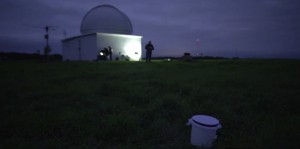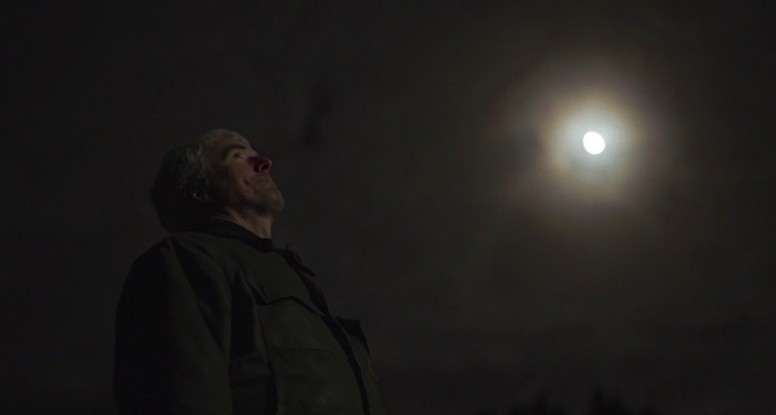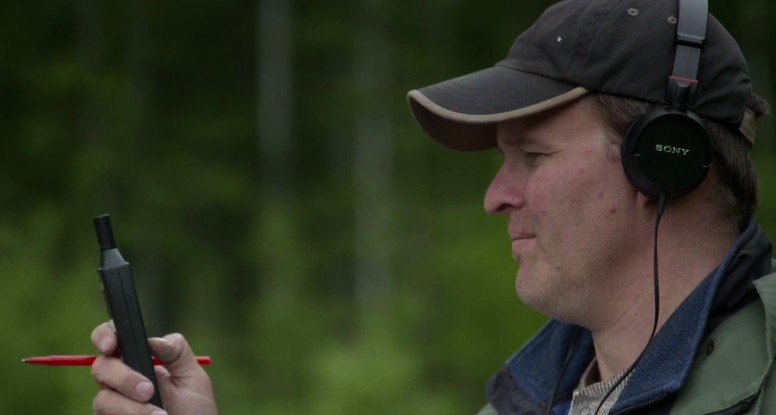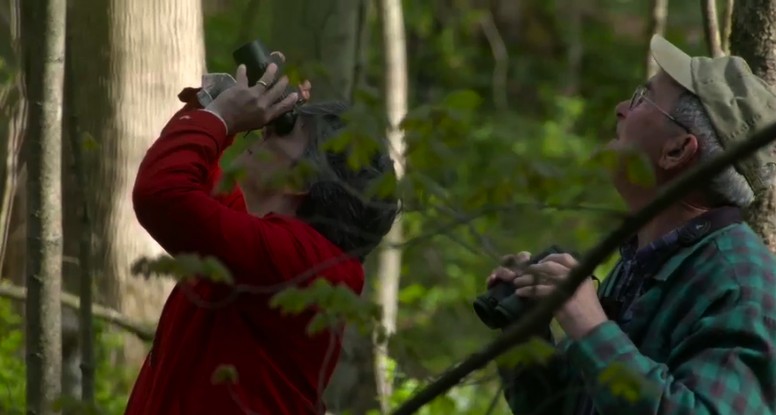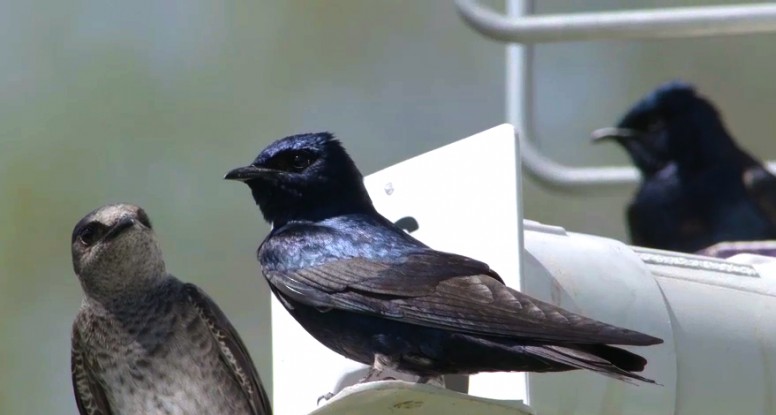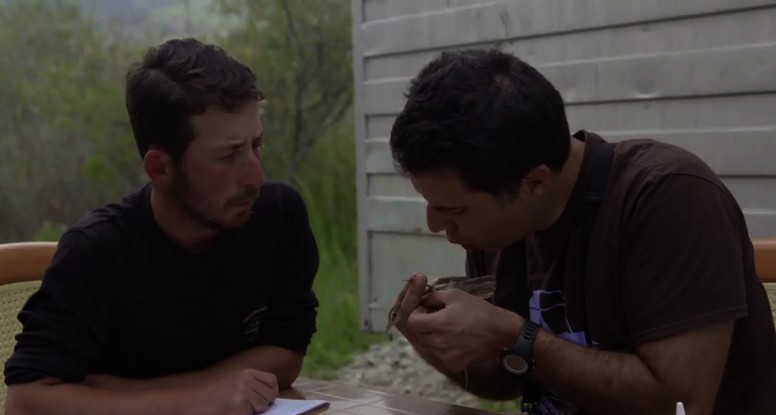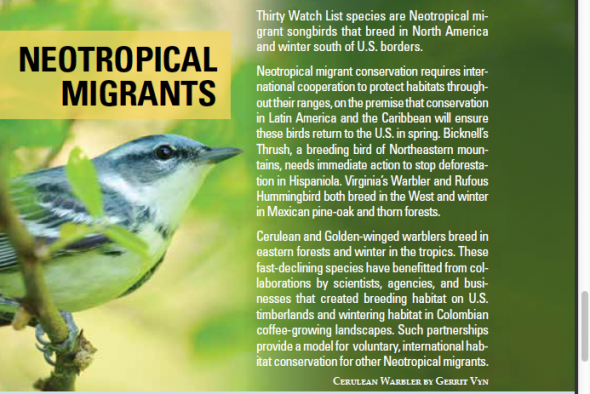 The State of the Birds report is out. The report tries to mitigate the drastic news about further declines and more ‘red listed’ species with Conservation success stories. What does this mean for Songbirds? The news is not great, for forest songbirds, nor for neotropical migrants.
The State of the Birds report is out. The report tries to mitigate the drastic news about further declines and more ‘red listed’ species with Conservation success stories. What does this mean for Songbirds? The news is not great, for forest songbirds, nor for neotropical migrants.
“The eastern forests indicator for 26 obligate breeding birds shows an overall drop of 32%, with a continued steady decline since 2009. Species dependent on either young forests (such as Golden-winged Warbler and Eastern Towhee) or mature deciduous forest (such as Wood Thrush and Cerulean Warbler) are showing the steepest declines. Because 84% of eastern forests are privately owned, timber companies and other forest owners can greatly benefit bird populations by maintaining large forest blocks and participating in sustainable forestry initiatives.
The western forests indicator, based on 39 obligate breeding species, has declined nearly 20% and has continued to decline since 2009. More than half of western forests are on public lands. Species dependent on oak and pinyonjuniper woodlands (such as Oak Titmouse and Pinyon Jay) are showing the steepest declines. As in the East, both early successional species (such as Rufous Hummingbird and MacGillivray’s Warbler) and mature forest species (such as Vaux’s Swift and Cassin’s Finch) are declining.”
I feel very fortunate to have encountered two of the songbirds mentioned above on the SSOS filmmaking journey. We recorded a Golden-winged Warbler in Costa Rica with Alejandra-Martinez-Salinas and a Wood Thrush in Waterloo Ontario with Lyle Friesen. On the downside, filming a Cerulean Warbler was impossible, as their numbers are way down, and the State of the Birds report, like our film SongbirdSOS, helps us understand why this is so.
“Thirty Watch List species are Neotropical migrant songbirds that breed in North America and winter south of U.S. borders.
Neotropical migrant conservation requires international cooperation to protect habitats throughout their ranges, on the premise that conservation in Latin America and the Caribbean will ensure these birds return to the U.S. in spring. Bicknell’s Thrush, a breeding bird of Northeastern mountains, needs immediate action to stop deforestation in Hispaniola. Virginia’s Warbler and Rufous Hummingbird both breed in the West and winter in Mexican pine-oak and thorn forests.
Cerulean and Golden-winged warblers breed in eastern forests and winter in the tropics. These fast-declining species have benefitted from collaborations by scientists, agencies, and businesses that created breeding habitat on U.S.timberlands and wintering habitat in Colombian coffee-growing landscapes. Such partnerships provide a model for voluntary, international habitat conservation for other Neotropical migrants.”



